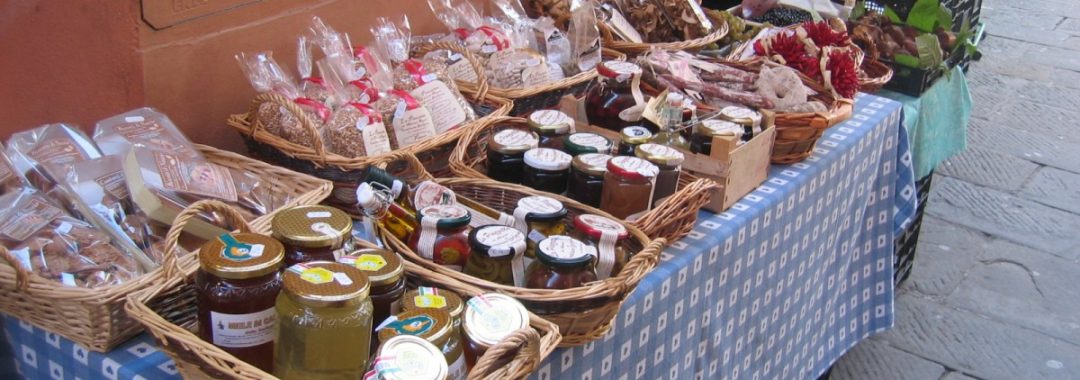(English text after the Finnish one)
Olen koko ikäni tehnyt työtä kaupan kanssa ja kaupoissa. Olen aina pitänyt kaupassa käymisestä ja asiakkaiden tarkkailusta, koska on mielenkiintoista havainnoida, miten ihmiset käyttäytyvät ostaessaan. Kauppahan on aina ollut liiketoimintaa, jossa tiedon ja numeroiden lisäksi tarvitaan myös asiakasymmärrystä, kykyä improvisoida, rohkeutta tehdä päätöksiä ja usein voimakasta visuaalista näkemystä siitä, millainen ratkaisu toimii. Luonnollisesti euro ohjaa toimintaa, mutta kivijalkakaupalla ei ole vielä kyvykkyyttä tuottaa niin tarkkaa tietoa kuin mihin verkkokauppa pystyy. Kaupassa kuitenkin vaikuttamisen kohteena on ihminen, ja kuten kaikki tietävät ihmiset eivät yleensä toimi kovinkaan rationaalisesti, vaan tunteella on voimakas toimintaa ohjaava vaikutus.
Kun nyt paljon puhutaan tiedolla johtamisesta, big data tarjoaa loppumattoman tiedonlähteen ja algoritmit kehittyvät yhä tehokkaammiksi, tulee mieleeni kysymys: ”Tarvitaanko vielä intuitiota?” Intuitio on se meihin ihmisiin sisään rakennettu järjestelmä, joka kykenee tuottamaan luovia ratkaisuja. Intuitio tarvitsee syötteekseen kokemusta, virikkeitä, kykyä ymmärtää, kykyä soveltaa ja uskoa siihen, että kykenee aikaan saamaan muutoksen. Intuitio on luonnollisesti edellytys luovassa prosessissa, oli sitten kyse designista tai taiteen luomisesta. Mielestäni intuitio on tarpeen myös liiketoiminnassa, erityisesti kun toimitaan ihmisten – asiakkaiden ja henkilökunnan kanssa.
Miten intuitio ja tiedolla johtaminen sopivat yhteen? Toisaalta huonosti, koska intuitio ei perustu suoranaisesti tietoon, vaan pikemminkin ymmärrykseen, kokemukseen ja kykyyn tunnistaa analogioita ja soveltaa niitä toisiin tilanteisiin. Toisaalta hyvin, koska tiedolla johtaminen tarkoittaa sitä, että johtamisen tukijärjestelmät kykenevät tuottamaan valtavan määrän tietoa. Vaatii ymmärrystä ja kykyä tunnistaa olennainen tieto ja intuitiota hyödyntää olennaista tietoa tarvittavilta osin.
Kun puolestaan ajatellaan asiakkaan ostokäyttäytymistä on kivijalkakaupassa impulssiostoilla suuri merkitys kaupan kannattavuudelle. Niitähän saadaan aikaan, kun rakennetaan hyvä asiakaspolku ja sen varrelle oivaltavia esillepanoja. Tästä hyvinä esimerkkeinä ovat vaikkapa IKEA ja Clas Ohlson. Mutta miten saada aikaan impulssiostoja verkkokaupassa? Se on toki mahdollista, mutta paljon vaikeampaa kuin kivijalassa. Kivijalassa se tehdään ”havaitse, tartu ja ota mukaan” –periaatteella, verkossa puolestaan ”löydä, raahaa ostoskoriin, näe kokonaissumma, pohdi vielä kerran” –periaatteella. On toki myönnettävä, että verkkokauppa on tässä mielessä suosii rationaalisempaa ostamista (jos sellaista onkaan). Verkkokaupassa impulssiostamisen mahdollistaa maksuton palautus: otanpa vielä tuonkin, palautan sitten ne kun en tarvitse. Käyhän se näinkin, mutta tässä suhteessa kivijalan impulssiostaminen on ainakin ekologisempaa ja rahat jäävät kauppiaan kassaan.
Mitä mieltä te olette? Onko kaupassa tilaa enää intuitiolle ja impulsseille? Sitä miettiessänne kannattaa lukea erinomainen juttu ”Intuition is the highest form of intelligence” (Bruce Kasanoff), löytynee hakemalla niin LinkedInistä kuin Forbesista.
How about intuition and impulse in retail?
My whole life I have been working in the stores and with the retailers. I love visiting stores and watching the customers; how they behave when they are shopping. Retail is a business where you need – besides the numbers – also customer insight (straight from the source), capability to improvise and make bold decisions on the spot, also strong visual insight on the best working displays. The best retailers have these skills. They know their customers and they understand how the main tool – store – works. Clearly money guides the actions but in the physical store you have to have the intuition based on understanding to make the correct decisions. Physical store is not yet capable of providing that amount of detailed data about the customer behaviour as the web-store can. Retailer wants to have an affect on the customer and as we all know, people do not usually act rationally – emotions have a big say in their behaviour.
So when people are talking about management by data, big data provides an endless source of facts and algorithms are getting all the time smarter, it makes me wonder do we still need intuition? We all have intuition that enables us to make creative decisions. For some people intuition is deeply buried, but for some it is an essential part of daily work. To keep your source of intuition happy, it needs as an input stuff like experiences, stimulus, capability to understand, capability to apply and trust on your capability to make change. Intuition is a required element in every creative process, whether it is art, design or business. Intuition is a must in retail, especially when we are working with people, customers and personnel.
How intuition fits with management by data? On the other hand very poorly, since intuition is not directly based on facts; it is based on understanding, experience and wider perspective that provides the intuitive ideas. On the other hand intuition fits well with management by data – usually there is a huge amount of data. It needs intuition to understand what data is important and what is the best way of utilising it.
So, we still need intuition. But how about impulse? In physical stores impulse sales has always been – and still is – very important for the store profitability. One part of store design is to create a customer path that maximizes the impulse opportunities. There are good example of this in the stores like IKEA and Clas Ohlson. But how to create impulse sales in the web-store? Yes, it is possible, but more difficult than in the physical store. In the physical store it happens like this: “observe-grab-go-pay”, but in the web-store it works like this: “find-drag to basket-see the total sum-consider-push OK”. One has to admit that web-store favours rational shoppers so that it is easy to avoid making impulse purchases. On the other hand having free return policy makes it easier. But in this case impulse sales in the physical sales is easier, more ecologic and leaves the money to the retailer’s purse.
What do you think? Does the retail any more have space for intuition and impulse? When you think that I recommend that you read and excellent article: “Intuition is the highest form of intelligence” by Bruce Kasanoff. I think you can find it from LinkedIn and also from Forbes magazine.
